28 The miracles of Lina De Martino and Matteo Colella
Padre Pio proclaimed Blessed
The miracle for the beatification of Padre Pio was received by
Consiglia De Martino
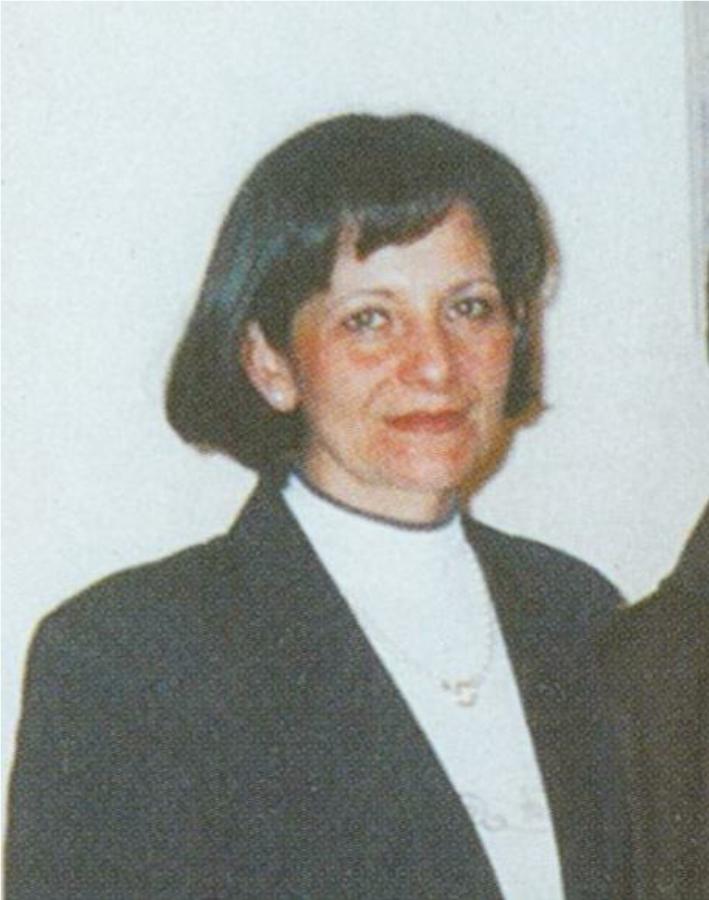
Consiglia (Lina) De Martino
Consiglia (Lina) De Martino is the wife of Antonio Rinaldi.
On November 1, 1995 she did not feel good, like fainting, sweating and suffocating.
Looking in the mirror she saw a lump under the left clavicle "in the form of a large grapefruit".
She asked her sister and brother in law to be taken to the Hospital.
She was examined by the Emergency Room physician, and a CT scan without contrast was immediately performed. It was about 1:00 PM.
CT (computed tomography) , also called CAT (computed axial tomography) scan, in Italy called TAC, generates digital three dimensional image of the inside of the body.
The scan can be done with or without contrast, according to specific needs.
Another CT scan, this time with contrast, was performed at 6:30 PM.
The thoracic duct in her neck had ruptured. A huge lump containing about half a gallon of lymphatic fluid had formed. This was confirmed by the two CT scans.
She was told it was 'necessary a difficult and complicated surgical intervention as soon as possiblè.
The surgery was scheduled for November 3.
While going back to her room she smelled the intense perfume of Padre Pio.
On November 2 she experienced again "the typical and intense perfume of Padre PIO" and started feeling better.
On November 3, at a check up before surgery the doctors were amazed that there was no more lump. The lymphatic fluid had all been absorbed.
The morning of November 4 at 7:30 AM she heard a voice: "Lina you are healed", and she smelled again the intense perfume of Padre Pio.
A chest X-ray was performed, and a total body CT scan was completed. Everything was normal.
She left the Hospital on November 6, without ever having surgery or medication.
Fra Modestino da Pietrelcina was actively involved since November 1st., praying on the tomb of Padre Pio for the healing of Lina.
Dr. Tommaso Contaldi, MD was instrumental in gathering all the appropriate clinical documentation.
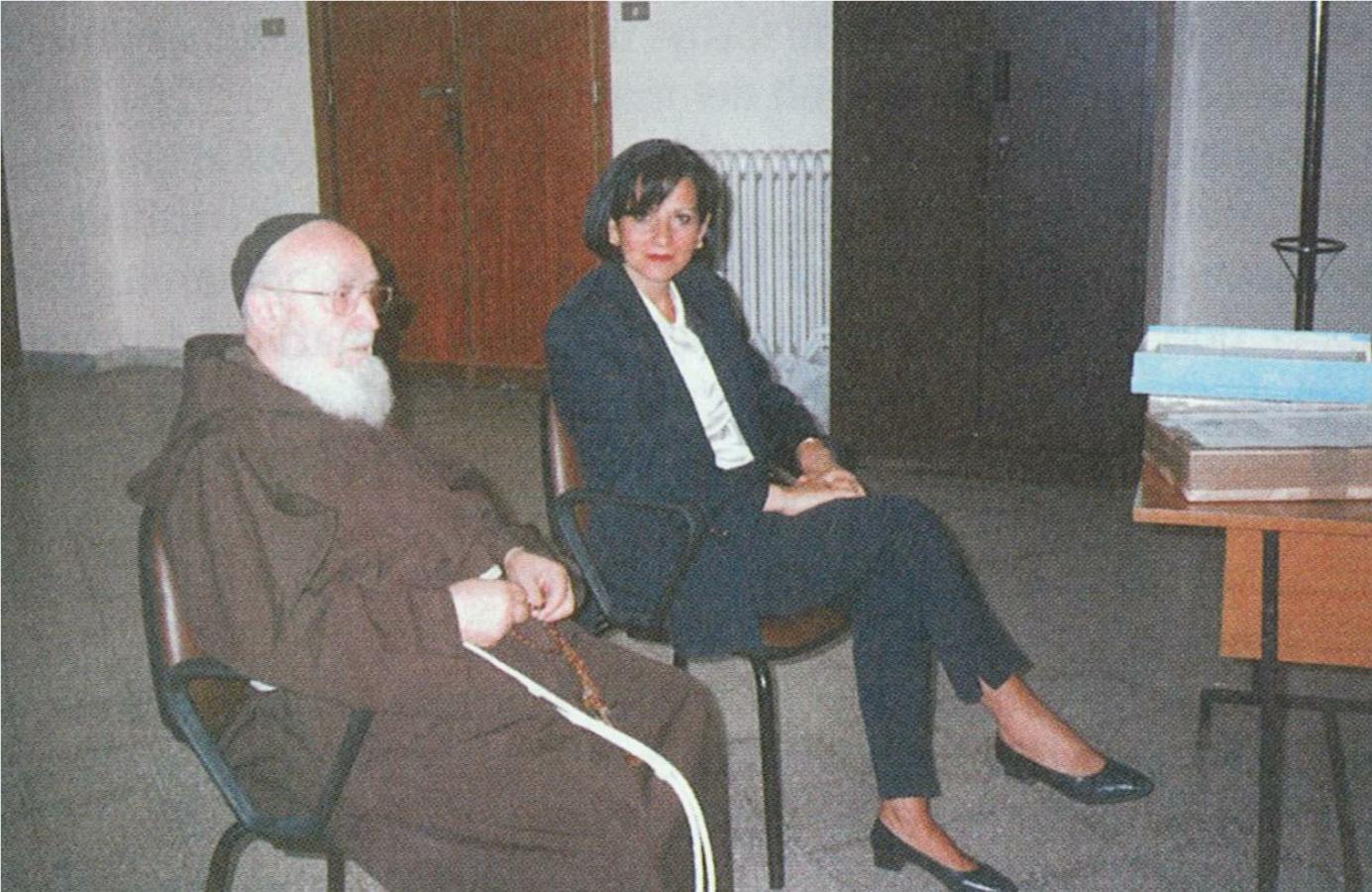
Consiglia (Lina), assisted by Fra' Modestino, prepares to testify.
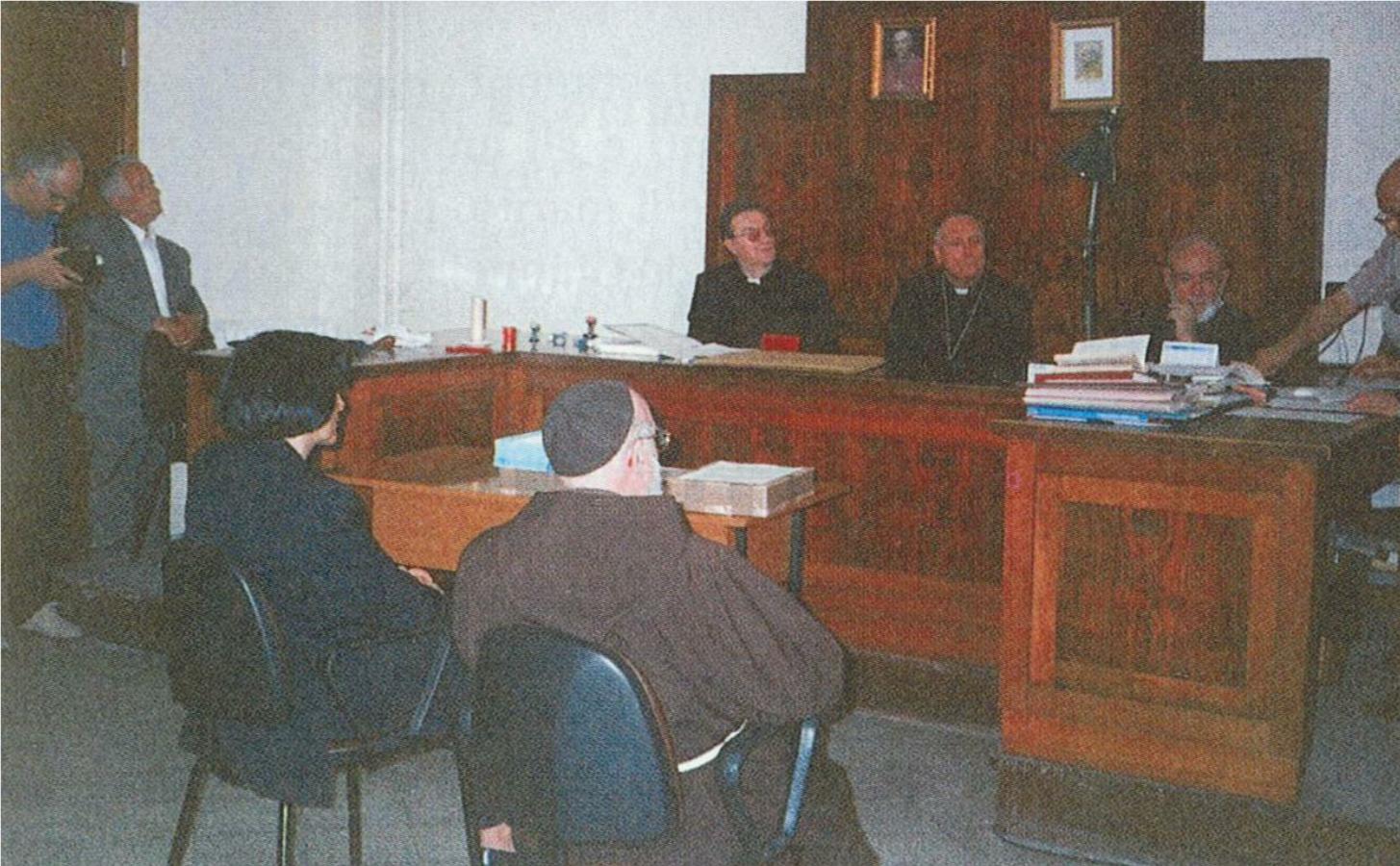
Consiglia (Lina) testifying at the diocesan process.
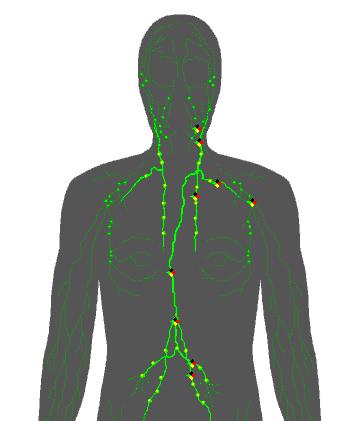
The lymphatic system: The vessels are called ductus, and the oval shapes are called lymph nodes.
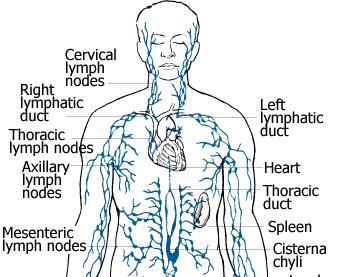
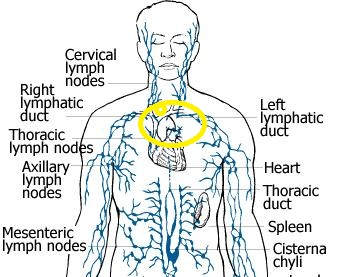
The area of damage of the left lymphatic thoracic duct.
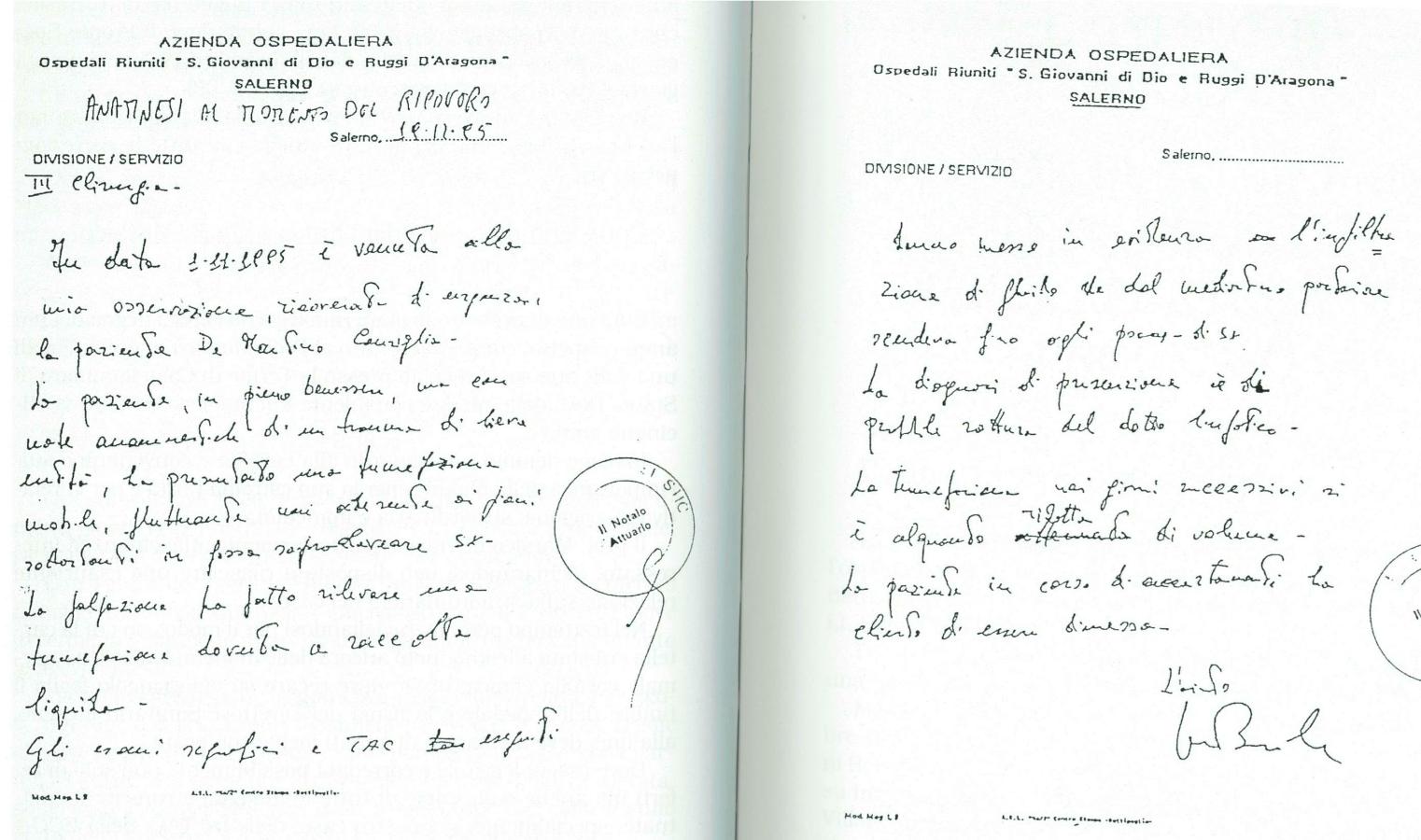
Statement by the doctor at the hospital about the events.
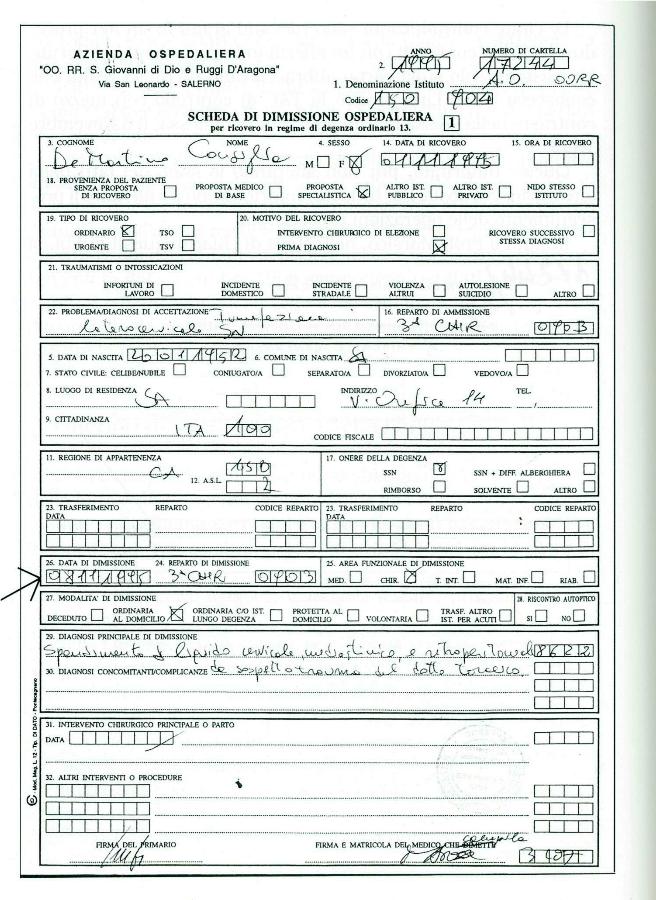
Discharge summary from the hospital.
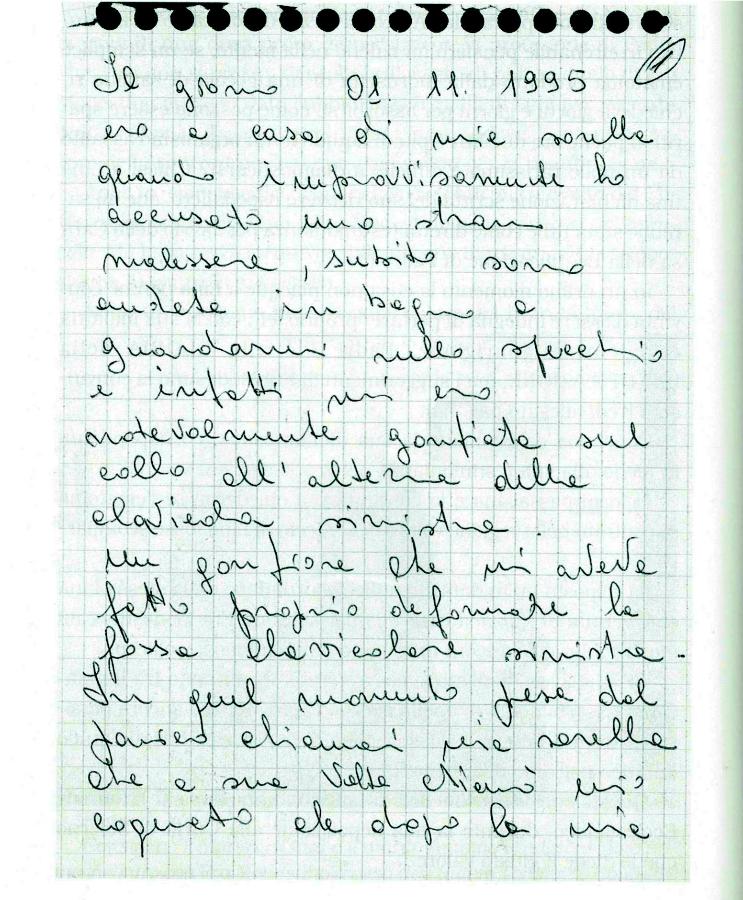
First page of the statement by Consiglia (Lina) about the events.
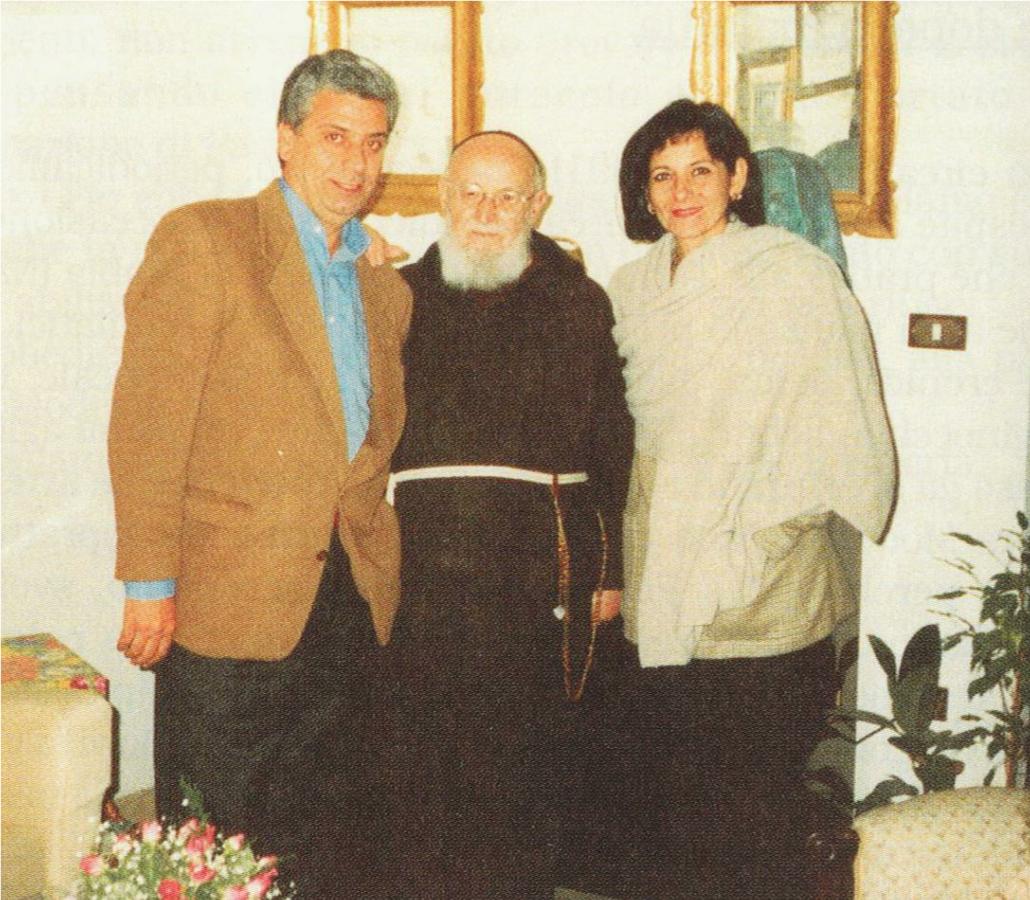
Antonio and Consiglia (Lina) with Fra' Modestino.
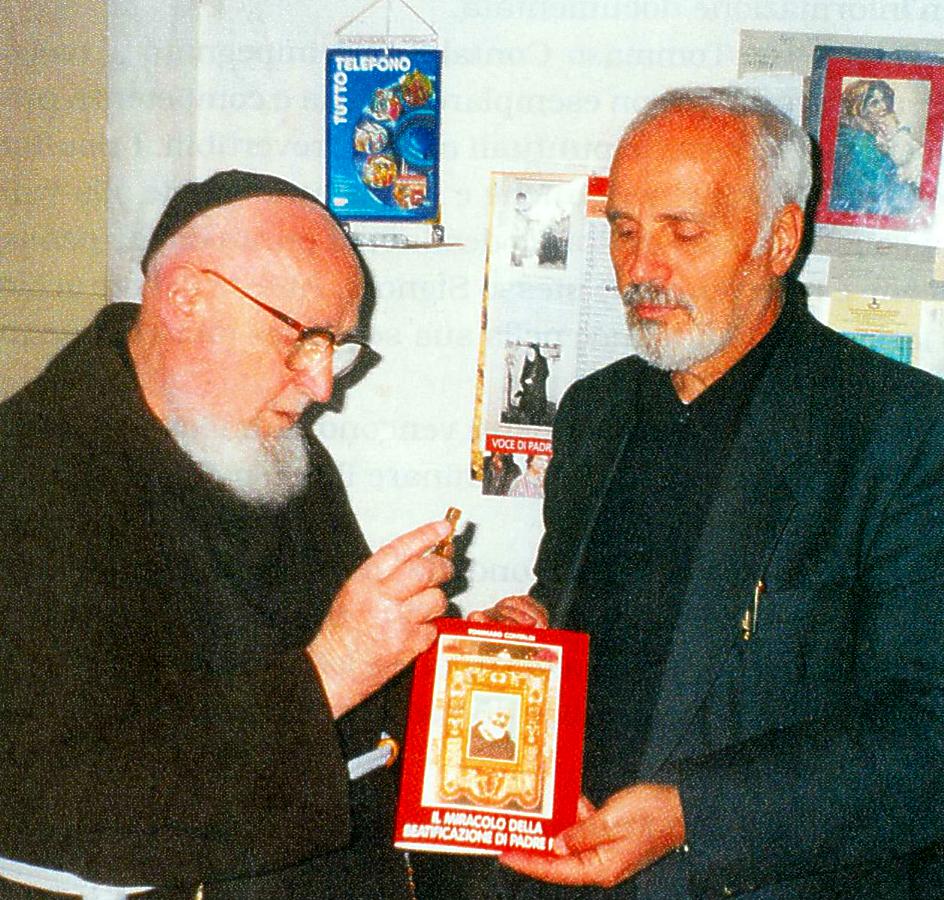
Dr. Tommaso Contaldi was instrumental in gathering the clinical documentation,
and wrote a book about the events.
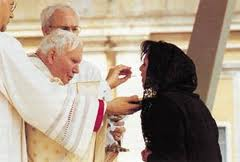
Consiglia (Lina) receiving Communion by the Pope
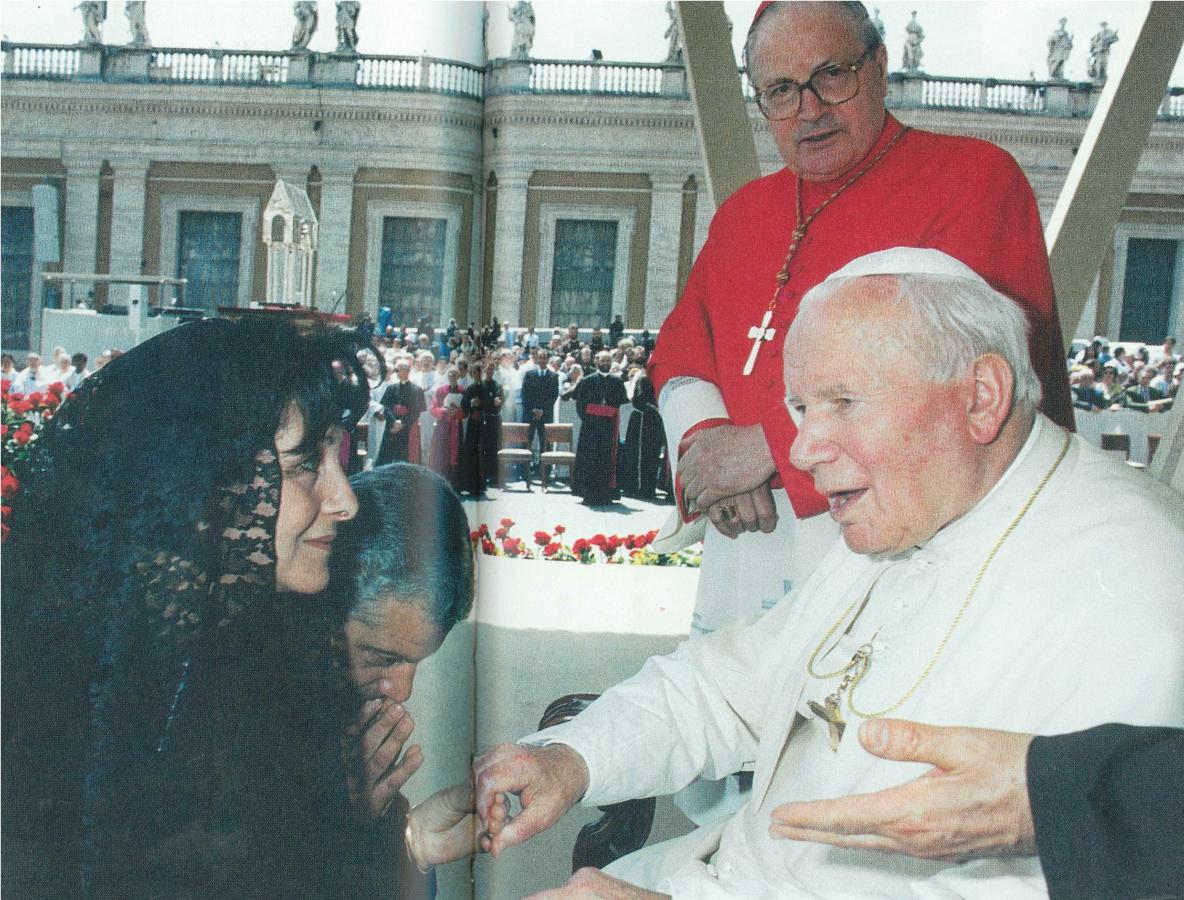
Consiglia "Lina" De Martino and her husband Antonio Rinaldi with the Pope after the ceremony.
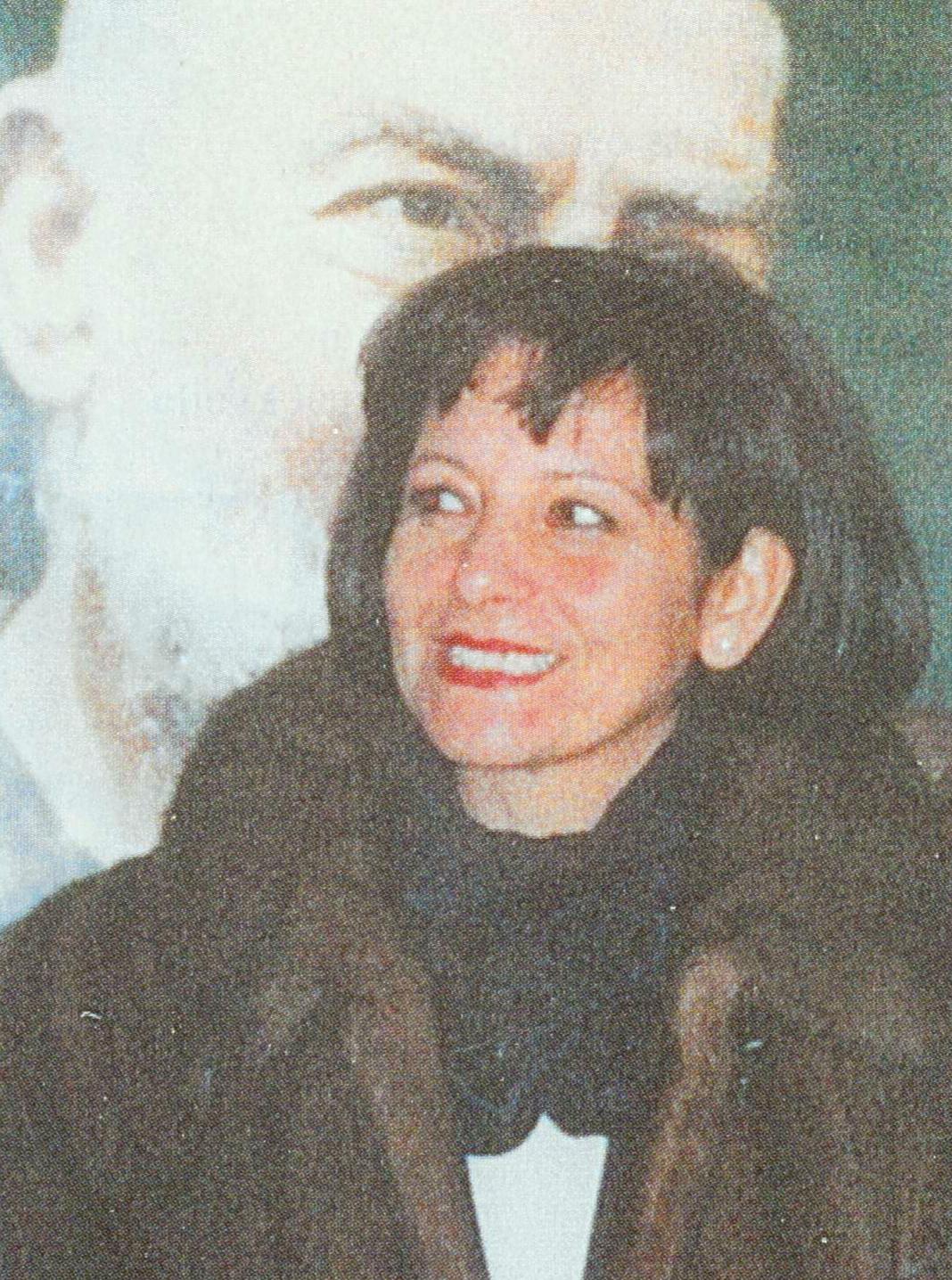
Consiglia "Lina"De Martino with Padre Pio in the background.
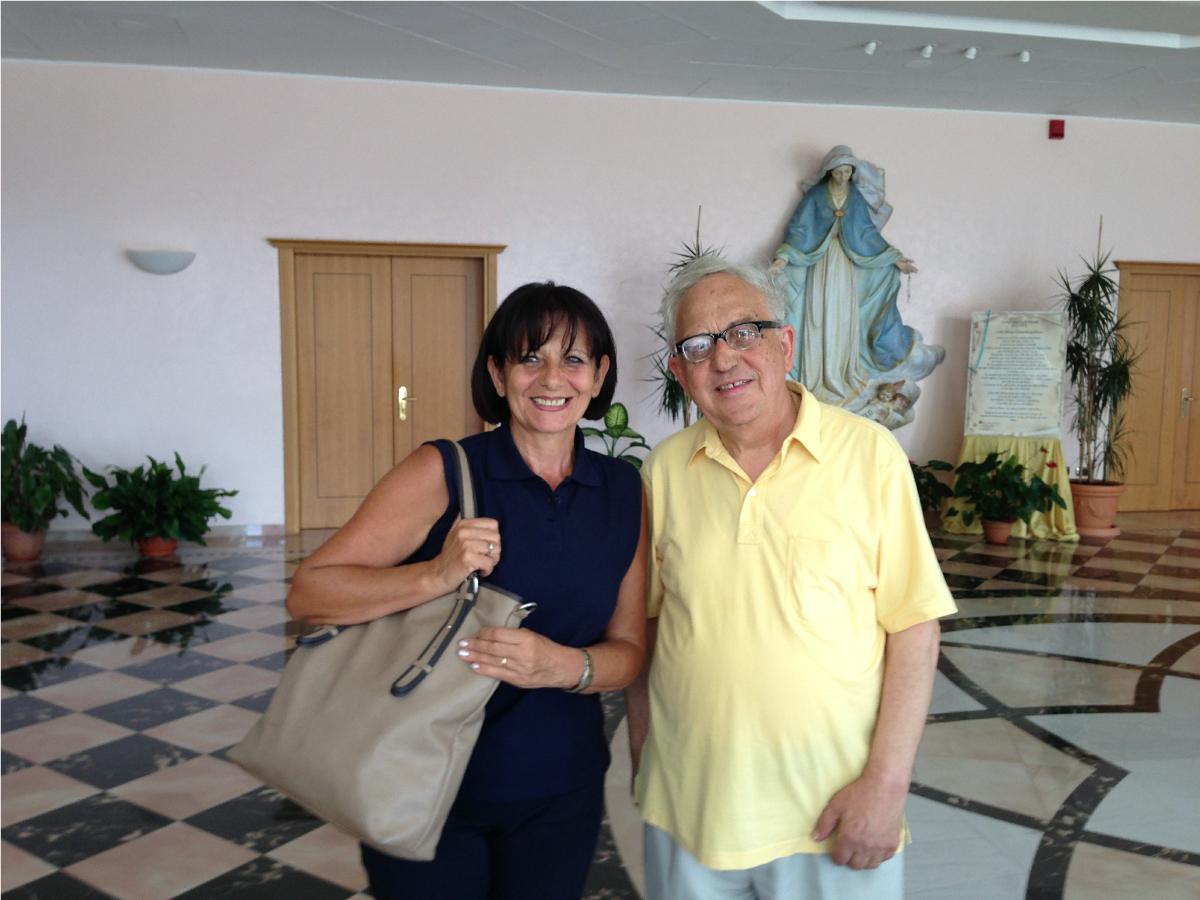
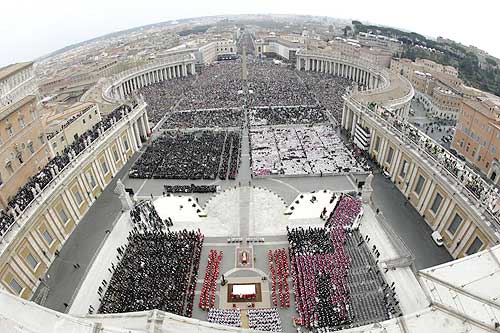
Padre Pio proclaimed Saint
The miracle for the canonization of Padre Pio was received by Matteo Pio Colella.
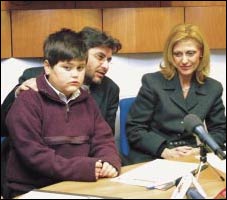
Matteo Pio Colella with his parents.
The miracle happened at the "Home for the Relief of Suffering" "Casa Sollievo della Sofferenza", the hospital created by Padre Pio, and located few steps from his tomb.
Matteo is the son of Dr. Antonio Colella, Urologist at the "Home for the Relief of Suffering" Hospital, and of Maria Lucia Ippolito.
Matteo received the miracle when he was seven. He was born on December 4, 1992.
On the morning of January 20, 2000, Matteo was seized with high fever, weakness, headache, vomiting, and mental disorientation.
At 10:00 the child was in school, and Lucia got a cell phone call from his teacher. She stated that Matteo was slumped on his desk and markedly shaking.
Lucia took the child home. The temperature was above 104 F. The father thought that he had the flu.
By the evening purple spots were spreading all over his body.
Matteo was taken at once by his mom and dad to Casa Sollievo della Sofferenza.
On the stretcher in the emergency room he told his father out of nowhere: "Daddy, when I grow up I want to get rich and give everything to the poor."
Despite intensive treatment Matteo went in septic shock, with difficul breathing, and irregular pulse. He was placed on a respirator.
Matteo's heart stopped, and the attending physician had to revive the boy.
The attending told Matteo's parents that the intensive treatment was not having the desired effect, and the prognosis was that the comatose child "would die soon".
The mother went to pray on Padre Pio's tomb, and while praying the Rosary with the friars she reported that:
"With my face on the cold granite I saw with closed eye a friar with a beard, who advanced resolutely to a bed and picked up with both hands the small rigid body of a child and put him on his feet."
Three days later Lucia was "assailed by a very strong smell of flowers, a penetrating and most pleasant perfume."
Eight days after he fell ill Matteo surprised everybody by emerging from his coma.
The mother questioned him if he remembered anything.
"Yes, I saw myself while I was sleeping from a distance, on the bed. There was an old man with a white beard. He had a long brown habit.
He gave me his right hand and said: "Matteo, don't worry, you will get well quickly."
The mother showed him a picture of Padre Pio, and the boy identified him al the old man he had seen.
A CAT scan done on January 27 did not show any kind of lesion to the brain of Matteo.
On February 6, 2000 Matteo Pio Colella left the Casa Sollievo della Sofferenza completely healed.
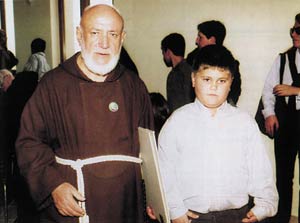
Matteo with Padre Gerardo da Flumeri
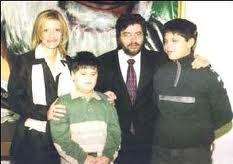
Matteo with mom, dad, and older brother Alessandro
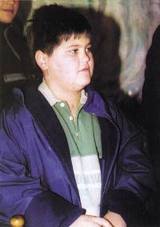
Matteo Pio Colella
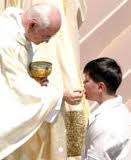
Matteo receiving Communion in St. Peter's Square during the ceremony.
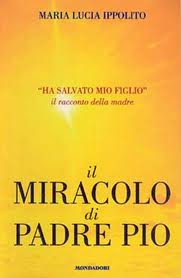
Matteo's mother wrote a book about the whole experience.
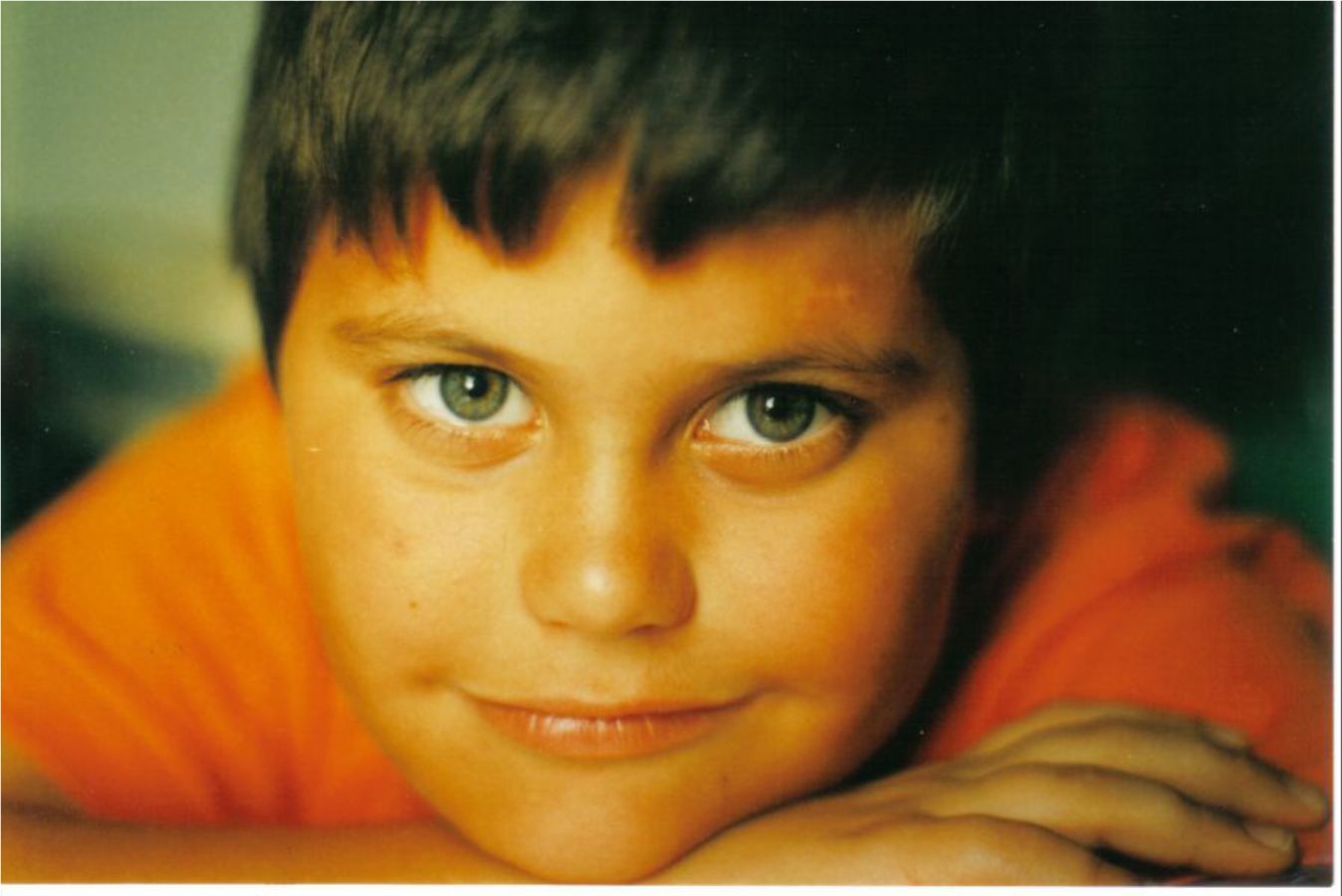
Matteo Pio Colella
The gate is narrow and the road that leads to life is constricted. And those who find it are few. (cfr. Mt. 7:14)

St. Peter's square honoring Saint Padre Pio
The path to be proclaimed Saint.
Five years must pass from the time of a candidatès death before a cause may begin.
At the expiration of the five years a "nihil obstat" meaning "nothing stands in the way", from the Congregation for the Causes of Saints is needed to get the cause started.
The "nihil obstat" is requested by the bishop of the diocese in which the person died.
During the five years information can be gathered about the deeds and the writings of the candidate, so that the bishop can send a documented request to obtain the "nihil obstat".
When the 'nihil obstat" is granted, the proceeding may begin. At this point the candidate can be called Servant of God.
The process has two phases, first in the Diocese and second in the Vatican.
For the diocesan process the bishop appoint two committees: the Ecclesiastic Tribunal and the Historical Commission.
The bishop also will consult with the bishops of his region to solicit their opinions on the merit and timeliness of introducing the cause.
The Ecclesiastical tTibunal of five members collects evidence from witnesses.
The witnesses are called before the tribunal to recount concrete facts on the theological virtues of faith, hope and charity, and the cardinal virtues of prudence, justice, temperance and fortitude.
The Historical Commission of five members examines the published and unpublished writing.
Any documents written by and about the candidate must be gathered and examined.
Once the diocesan investigation is finished, the documentation is passed on to the Congregation for the Causes of Saints.
In the Vatican, the Congregation for the Causes of Saints reviews all the information submitted and refers the conclusions to their own Theological Committee and Medical Committee for their opinion.
The Theological Committee evaluates if the candidate practiced in "heroic" mode the theological virtues of faith, hope and charity, and the cardinal virtues of prudence, justice, fortitude and temperance.
The Medical Committee examines an healing happened after the death of the candidate, and attributed to his intercession, end evaluates if it is scientifically inexplicable.
The theologians also evaluate if the healing attributed to the intercession of the candidate is a miracle.
If everything is approved, the case is presented to the assembly of the Bishops and Cardinals members of the Congregation, for consideration and approval.
The case is than presented to the Pope. If the Pope approves, he emanates a decree that the candidate can be proclaimed Blessed, and set the date for the Beatification.
For sainthood, a second miracle is needed, that happened after the Beatification. The same procedural investigation as in the firsts miracle is applied. Than the Blessed is proclaimed Saint.
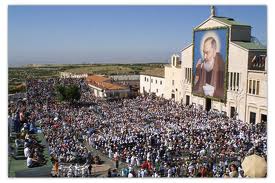
San Giovanni Rotondo the day Padre Pio was proclaimed Saint.
The Path of Padre Pio to be proclaimed Saint.
Padre Pio died September 23, 1968 in San Giovanni Rotondo, diocesis of Manfredonia.
On November 4, 1969, Padre Bernardino da Siena, General Postulator for the Capuchin order, petitioned Mons. Antonio Cunial bishop of Lucera and Apostolic Administrator of Manfredonia, to request the 'nihil obstat".
On November 11, 1980, the Congregation for the Doctrine of Faith granted a "nihil obstat cum mente".
On November 29, 1981 the Congregation for the Causes of Saints the "nihil obstat" for the proceedings to get started.
On March 20, 1983 the process was started in the church of St. Mary of Graces in San Giovanni Rotondo.
On January 21, 1990 the diocesan process was completed with a solemn ceremony in the church of St. Mary of Graces.
On February 12, 1990 the documentation was given by Mons. Valentino Vailati Archbishop of Manfredonia, to Mons. Antonio Casieri, chancellor of the Congregation for the Causes of Saints.
At this point the process moved to Rome.
On February 12, 1990 the process in Rome is initiated by Mons. Antonio Casieri, Chancellor of the Congregation for the Causes of Saints.
The opening was held in the hall St. Lorenzo da Brindisi at the General Curia of the Capuchin Order.
On December 7, 1990, the Cardinal Angelo Felici, Prefect of the Congregation for the Causes of Saints emits a decree "De Valididate".
The decree means that the congregation declares "valid" all the work that had been done in the Diocesan Process.
On June 13. 1997 the nine members of the Theological Committee of the Congregation for the Causes of Saints offer a unanimous decision of the "heroic virtues" of Padre Pio.
On December 18, 1997 the decree about the heroicity of virtues is solemnly read to John Paul II in the Concistoro Hall of the Vatican. Padre Pio is proclaimed Venerable.
O In January 1998 the Congregation for the Causes of Saints starts the evaluation "super miro" meaning of the "miracle" received by Consiglia De Martino.
On April 30, 1998 the Medical Committee of the Congregation for the Causes of Saints CCS, composed of five members, gives unanimous approval.
They state that "The healing of the traumatically ruptured thoracic duct of Consiglia De Martino on November 3, 1995 is scientifically inexplicable".
On June 22, 1998 the seven members of the Teological Committee of the Congregation for the Causes of Saints unanimously confirm the Consiglia De Martino case as a miracle .
On October 20, 1998 the assembly of Cardinals and Bishops members of the Congregation for the Causes of Saints approves the Consiglia De Martino case as a miracle.
On December 21, 1998 Pope John Paul II promulgates the Decree on the veracity of the De Martino miracle, and sets May 2, 1999 an the date for the Beatification of Padre Pio.
On May 2, 1999 Padre Pio is proclaimed Blessed by Pope John Paul II in St. Peter's Square.
On June 11, 2000 starts the Diocesan Process for the healing of Matteo Pio Colella. The process ends on October 17, 2001.
On November 22, 2001 The Medical committere of the Congregation for the Causes of Saints unanimously states that the healing of Matteo Pio Colella was quick, complete, and lasting, without consequences, and scientifically inexplicable."
On December 11, 2001 The Theological Committee of the Congregation for the Causes of Saints unanimously confirm the case of Matteo Pio Colella as a miracle .
On december 18, 2001 the assembly of Cardinals and Bishops members of the Congregation for the Causes of Saints approves the the case of Matteo Pio Colella as a miracle .
On February 2002 Pope John Paul II promulgates the Decree on the veracity of the miracle of Matteo Pio Colella, and sets June 16. 2002 as the date for the Canonization of Padre Pio.
On June 16, 2002 Padre Pio is proclaimed Saint by Pope John Paul II in St. Peter's Square.
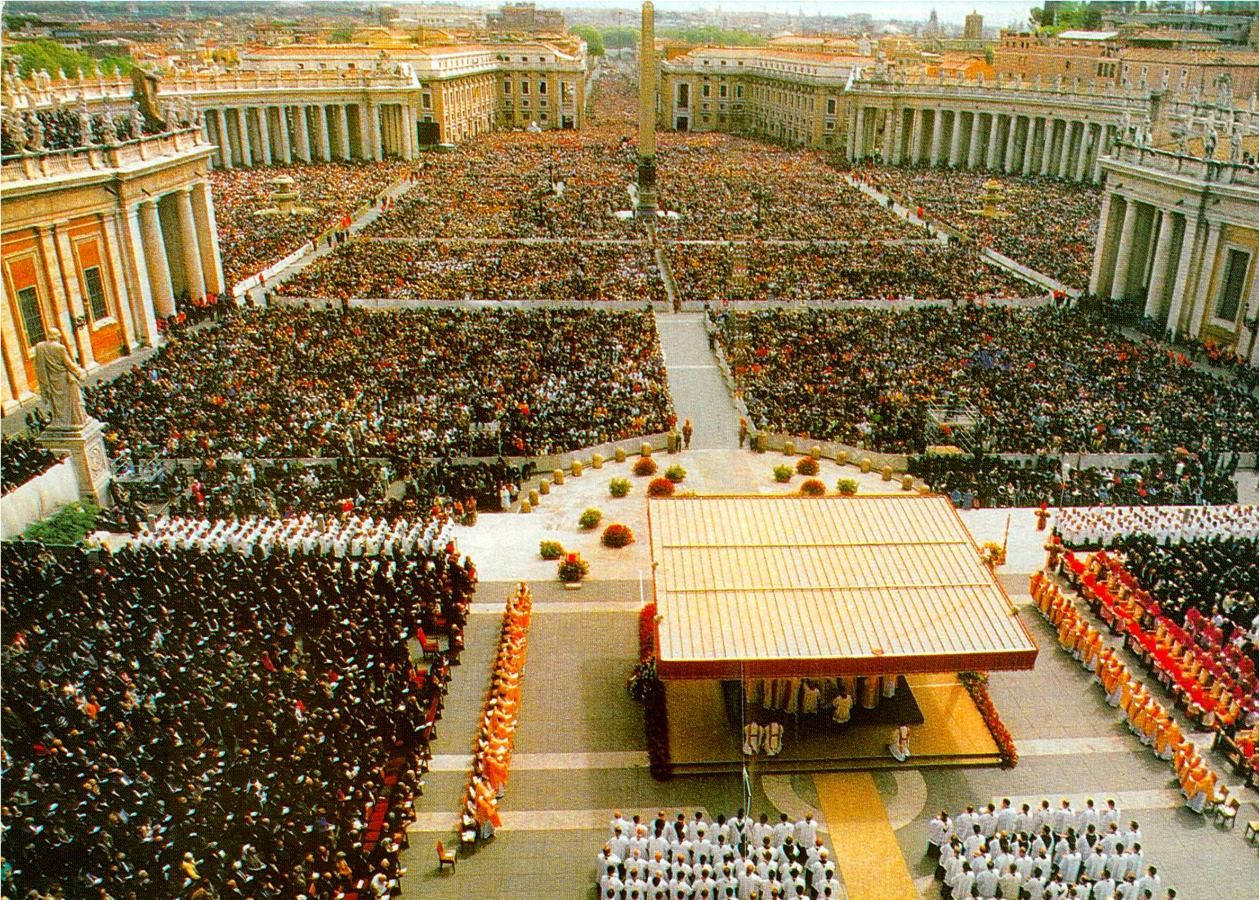
St. Peter's Square honoring the greatest Saint, PADRE PIO